The long-held dream has finally actualized, and you now own your first pair of pointe shoes. At last! The thrill of calling those expensive, pink/peach, satiny, torpedo-shaped shoes your own. The pride. The satisfaction. The—yikes!—pain.
Yup. The pain.
Why? you might be crying, even after weeks into the ordeal. Even after having done all the necessary preparation work. Why such pain? What is going wrong?
Fret not, dear reader. The Classical Girl is here to offer you 10 reasons why those pointe shoes continue to hurt.
The short answers:
- Your feet aren’t ready. The foot muscles are weak and need to strengthen.
- They don’t fit well, largely because you didn’t seek out a professional fitter.
- The brand you chose favors a foot type that simply isn’t yours.
- You were unaware of the reality: pointe shoes hurt. They were never intended to feel good.
- Your toes and skin haven’t callused up enough yet.
- Your toenails are too long/too short.
- You haven’t broken in the shoes enough
- You’ve broken in the shoes too much
- You aren’t using enough toe padding. Or, paradoxically, you’re using too much toe padding.
- There could be some misalignment issue with your ankles and/or feet.
The Longer Answers:
1) It could be that the muscles on your feet just aren’t ready to support you, and you should spend another year off pointe, or doing the simplest exercises with the pointe shoes on, like holding onto the barre and slowly trying to rise to pointe from demi-pointe. And the point (no pun intended — well, maybe a little) shouldn’t be to arrive en pointe, so much as get those muscles working and growing strong from that midway point between demi and full pointe. If those muscles ache and hurt, don’t stay long. Back off a tiny bit. But you do want to arrive at that place that’s a little uncomfortable and accustom your feet to that. I can appreciate the pain – I tried on my old pointe shoes a few years back, just for fun, to show a friend’s aspiring ballerina daughter, and was stunned by how my muscles clenched in protest. It hurt like it had never hurt, decades back, when I danced en pointe. Well, no surprise! Those are very specific muscles that take the foot en pointe, and you have to work your way toward the process slower than you might want, or expect. Like so many things in life, you gotta do the boring, humbling stuff before you can really take off.
2) If you’re a teen and your parents are buying your shoes for you, share this with them. Parents: never, never buy a pointe shoe so that there’s “room to grow.” Yes, pointe shoes are expensive, and yes, your child will outgrow them with one growth spurt. That’s life. Loose shoes are a terrible idea. They’ll cause more harm than good, as your daughter’s feet slide around, clench, get squashed at the tip. It’s like buying gloves two sizes too big to grow into (and then walking on your hands/fingertips).
3) If you’re an adult beginner, are you taking regular class with a qualified teacher, or are you teaching yourself ballet from online tutorials? Is your motivation greater than your current abilities? And that pedicure you’re investing in is buffing off those “good,” hard-earned calluses. The latter three things need to be reconsidered.
4) Along the lines of self-taught ballet, did you maybe order those pointe shoes online instead of getting fitted by a professional pointe shoe fitter in an actual store? And/or did you choose the brand that maybe your best friend wears and loves, but which favors a foot type that simply isn’t yours? Bad call, as you’re coming to find out. But both these problems are easily resolved: go find a professional pointe shoe fitter, or at least a shoe store that has an experienced pointe shoe salesperson on hand. Drive two hours one-way if you have to. It’s that important, at least for that first, all-important fitting. Let them help you find which shoe works best. There are tons of options available. Tons. The following illustrates but a few:
5) A memory related to the above: I was nineteen, wearing Capezios and still having a hard time getting up en pointe without pain. I assumed the shoe was fine (got professional advice when I chose it, but this was suburban Kansas in the 1970’s) and that it was my own wimpiness. It sucked. I’d sort of clench and jolt my way up to pointe, kind of like the way you take off a Band-aid in one quick, jerking movement because it hurts so bad to do it slowly. I’d recently joined a dance company, and I was feeling pretty ashamed to be failing at this seemingly rudimentary task. My observant artistic director caught on, watched me “roll up” slowly en pointe – which I simply couldn’t do elegantly with those shoes. “Try Freed pointe shoes,” was her advice, which I took. ((Lone flaw with the graphic above: WHY NO FREEDS?)) Oh, my. Wow. What a difference with Freeds, made by Freed of London. I rolled up easily. No pain. Easy to go up and down off pointe. One of the happiest, most relieved moments of my ballet life, trying on that first pair of Freed pointe shoes. (Worth mentioning that a good number of professional ballet dancers prefer Freed pointe shoes, although Gaynor Minden, a pointe shoe constructed very differently from the others, has an increasing number of fans. And maybe this is a U.S. preference and not worldwide.)
6) Padding matters, but maybe not how you think. While not enough of it can create pain, believe it or not, too much can be the source of equal problems. You want your toes to be able to “feel” the floor, or at least the insides of the pointe shoe, in an intuitive way. Think of wearing mittens, big bulky ones, inside the house as you do your daily activities. Cushioned, yes. Effective at finger dexterity, no. I started out, like so many beginners do, cramming the box with padding. In my early pointe shoe days, the choice was… lambs’ wool. Or more lambs’ wool. Which quickly became problematic because my big toe always created holes in the protection, during which time my smaller toes felt cramped and crowded, all this surplus wool gravitating to them, even as my big toe was going “ow, ow, ow!” Later, there were foam rubber toe pads, that ultimately did something similar, where the big toe nail cut through the cushion like butter and created a vulnerable spot even as, again, the other toes felt too padded. During my performance years, my artistic director taught me a nifty trick: use knee-high pantyhose that you start to put on your feet, just up to your toes, and then you wrap the rest around your toes. It offered a light cushion that, granted, might not be enough for someone brand new to pointe, but for a dancer or student who’s got “seasoned feet,” it’s a great way to feel protected, yet feel the floor, and not have the smaller toes feel numbed by all the cushion. I can’t comment on the gel toe pads available these days, because I danced en pointe only in the ‘70s and ’80s, but I’m inclined to think the rule still applies: don’t use the protection as a crutch [for too long] that prevents your toes from really “feeling” the floor. You might ultimately need less protection than you think.
7) There could be misalignment issues with your ankles and/or feet going on. Fret not — this doesn’t have to mean that you’ve forever missed your chance to dance en pointe. Go to a doctor, a physical therapist, figure out what is really going on. They can assign you therapeutic exercises to help combat your issues. And if they say “hmm, there might be some surgery required, down the road,” take comfort in the knowledge that professional ballet dancers are frequently told this, and have to take the scary step of backing off dance for six weeks to six months, to repair what is malfunctioning (often it’s an extra bone in the foot, a bone chip, hammertoe, stress fracture, sesamoiditis, etc). And they are able to go back to dancing en pointe at the highest level. So don’t go thinking misalignment issues or more serious issues mean that’s it for you, for life. You should NOT be in the high level of pain that the issue is causing. Don’t be in denial about this. Check in with your doctor.
8) Breaking in pointe shoes Oh boy. That could be a blog of its own. It’s crucial. It’s an art in and of itself. There are tricks to prolonging the shoes’ life, as well. I’m going to let my characters from my first ballet novel, Off Balance, tell you what they preferred doing. Scroll to the bottom of this page (or you can check out the novel itself HERE).
So. In summary…
Find a store that has a pointe-shoe fitting expert working. Try on different makers of pointe shoes. If you haven’t seen my post, “10 Odd Facts About Pointe Shoes,” check it out. Strengthen your feet, and don’t rush the process of this crucial preparation to dancing en pointe.
And the good news is, if it is simply that your muscles are cramping and the pressure really hurts your feet, if you make it a point to practice at home, feet in first position, facing a barre-facsimile (the back of a kitchen chair works well), that simple exercise of rolling slowly up and slowly down, for 10 minutes nightly (or start at 3 minutes and work your way up to 10 gradually) in a month’s time, that cramping will be GONE because your muscles have grown stronger. There will always be some “ow, this pressure on my toes hurts!” That, alas, is one of the things most aspiring pointe dancers overlook. Pointe shoes hurt. I do not miss wearing them. But oh, wow, how beautiful they look when your strong feet are dancing in them.
Time for a little fun after all this serious talk. Enjoy this darling tutorial of sorts from The Australian Ballet, “The A to Z en Pointe.”
And now here’s that excerpt from Off Balance, where my characters, Alice and Lana, talk about what they do for their pointe shoes. The novel is on summer sale for only 99 cents; you can read a nice, long preview and/or purchase a copy HERE.
When Alice entered the living room, Niles and Carter were each examining one of Lana’s pointe shoes, turning the peach satin shoes this way and that. In spite of her grumpiness, Alice smiled.
“Oh, look at that,” she said. Lana glanced up at her hesitantly. “You wear Freeds.”
“I do,” Lana said. “The guys were asking about them, and I had a brand-new pair here in my bag.”
“I wore Freeds, too. Pretty much everyone in the company did.” She moved over to Niles, sat and peered closer at the torpedo-shaped shoe in his hand. “Wow. It’s been years since I’ve seen one of these up close.”
“Does it make you nostalgic?” Niles asked.
“Not really. I had such a love-hate relationship with my pointe shoes. I don’t think my feet were ever completely free of pain once I started dancing en pointe.”
“I’d have to say the same,” Lana confessed.
Niles tapped the side of the shoe on the coffee table. It gave a hollow thwack in reply. “Boy, it’s no wonder,” he said. “These are like plywood. I never would have guessed.”
“You have to break them in,” Lana said.
“How?”
In response, Lana reached into her dance bag and pulled out a ball-peen hammer. “Using this on them, or slamming them against a wall.”
“Or sticking them in a doorjamb and closing the door on them,” Alice added.
Lana nodded. “Sometimes I’ll pour rubbing alcohol over the box while I’m wearing them, too. That helps break down the glue in the area around my bunions. At least temporarily.”
“And these shoes, once they’re broken in, how long do they last?” Carter asked. “I’ll bet you go through several pairs a year, don’t you?”
Lana and Alice exchanged superior glances and began to chuckle.
“Okay, so I’ve proven I know nothing about ballet shoes,” he said. “Care to enlighten me?”
Lana made a “you explain” gesture to Alice, who told the others how the shoes, once properly broken in, could last anywhere from twenty minutes onstage to a full night of performing. After that the toe, the spot that the full body weight rested on, got too soft and the shoe was only good for class or practice.
Niles shook his head. “That has to get expensive.”
“Sixty to eighty bucks a pop,” Alice said. “Although in a professional company you don’t have to pay. What does the current contract give you?” she asked Lana.
“One hundred twenty pairs a season. Twice as many as I got in Kansas City. I’m in heaven.”
This astounded the others. Carter leaned closer. “So, how does a dancer come up with that kind of money if they’re not in a professional company?”
“You wear them a lot longer,” Alice said. “Wince through the too-soft spots where your toes make contact with the ground. Pour shellac into the toe spot of the box to try and avoid that. Tell your parents you really, really need to buy another pair. Oh, the wars I had with my father when I was a teenager. I kept telling him the soft ones were hurting my toes, but I still had to make do with only one or two pairs a month.”
You can read more HERE.

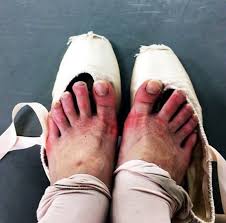
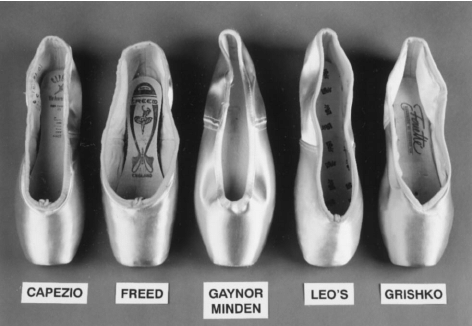
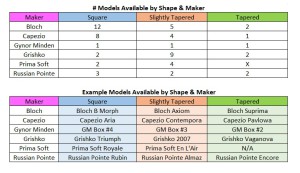
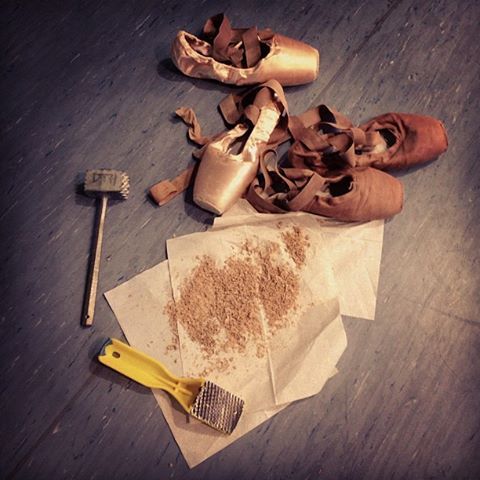
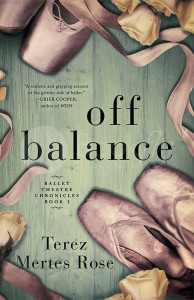
Great article!!!
You may want to check Siberian Swan Pointe Shoes. Active Arch Support patented technology addresses addresses all the issues listed in the article, and makes the pointe experience practically pain-free, beginners can start their pointe exercises from day one without any bruises
Feel the difference of modern technology. “Bleeding through your feet to become ballerina” is NOT our philosophy :))) Keep your feet healthy while en pointe!
Siberian Swan has recently launched a male model of pointe shoes that had an editorial coverage in Dance Magazine, and other publications
Terez – what an interesting, informative and entertaining article! I’m reclining in my zero gravity chair, ice packs to lower back to calm arthritis (ouch!) and to both feet to help settle plantar fasciitis (ouch!) pain after a full day‘s deli work. And I realize… at least my toes don’t hurt very much. Small blessings.
I watched the videos you included, enjoying them, grateful for something pleasant for passing this hour. And your book Off Balance – 107 great reviews. Good on you. Keep up the good work.
Love all your comments, Annette! Although I’m sorry to hear about the multiple (ouch!) instances. Yes, small blessings, that you’re not trying to employ pointe shoes into the equation too. ; )
Thank you for your words of encouragement – always deeply appreciated.
Alexander, thanks for commenting, and, ooh, cool, a new pointe shoe to consider! Readers should check out Alexander’s mentioned product, Siberian Swan Pointe Shoes. Makes me wish I was still dancing en pointe (except not really) so that I could try them out!
Those Prima Soft shoes in the graphic are awful! I work in a small dancewear store and we have only sold one pair since I started working there. All of them are as hard as bricks, no flexibility to them at all, especially compared to Gaynor Minden pointe shoes.
Ooh, love your detailed feedback, Pam, and I’m sure my readers do, too. Thanks for leaving your comment!
I like your comment about the Freeds 😊 In Dublin we don’t have much choice of ballet shops so it’s almost a take what you see. I was fitted last year and Merlet fitted best. However, no matter what I did (restitched ribbons, elastics, etc etc) they were always bagging at the sides and I felt I was sliding into the toes. I happened to be in London 6 months later and went around the shops with my merlets and got fitted in all the brands available. The moment I put on the pair of Freeds I was like Cinderella and the glass slipper. They were perfect. It was the first time I could actually stand en pointe away from the barre. Now I will admit that after a few months I had to admit that they were just a bit too long and was refitted with a shorter pair. I’m now doing a regular weekly hour long pointe class and doing some practice in between…but need a new pair as this pair are dead…they’re like slippers…my feet are too strong 🤣
Love reading your comments and your own personal experience, Sam! Thanks so much for taking the time to post it.
My daughter has just got her first pointe shoes and was tried in several different makes but even as a beginner she was so surprised by the difference when she was fitted with the right choice of Freed. She loves them !
Ooh, I love hearing this, Mrs. M Johnson! Wishing your daughter all the best with her new Freed pointe shoes, and so glad she found the right fitting pair.
I’ve just gone en pointe for pretty much the first time. I’m 56. I tried it a few years ago and have up in favour of working towards an exam. Now that’s done and the next level requires pointe so… I’m baaaaack. I had heard about Perfect Fit pointe shoe inserts and wanted to give them a go. Made them up at last week’s lesson and am AMAZED at how little pain I feel just rolling through demi pointe. Hope it continues the same way!
Ooh, I’ve never heard of pointe shoe inserts. Very cool that they alleviated the pain. And how cool that you’re going on pointe at 56! You’re an inspiration to to me — maybe I should give them a try again some day (I’m 58).
Thanks for leaving your comment, Jen!
My first attempt on pointe was Capezzios. ZOMG the pain. Tried again last year with Freeds, and wow. Turns out I have a similar foot profile to the great Fonteyn- who also had Morton’s foot – that is a long toes with a longer second toe , high arches but a low profile foot, needing a narrow box with a highish vamp, but not particularly stiff sole or shank.
Pity my right ankle won’t support the idea anymore , after a fracture was disguised as a sprain as – being ex military and used to walking on pain – I was supposedly “Ottawa” negative.
Still, it was nice while it lasted
Loved reading about your experience with pointe shoes, Sinead. What wonderful specifics you offer!